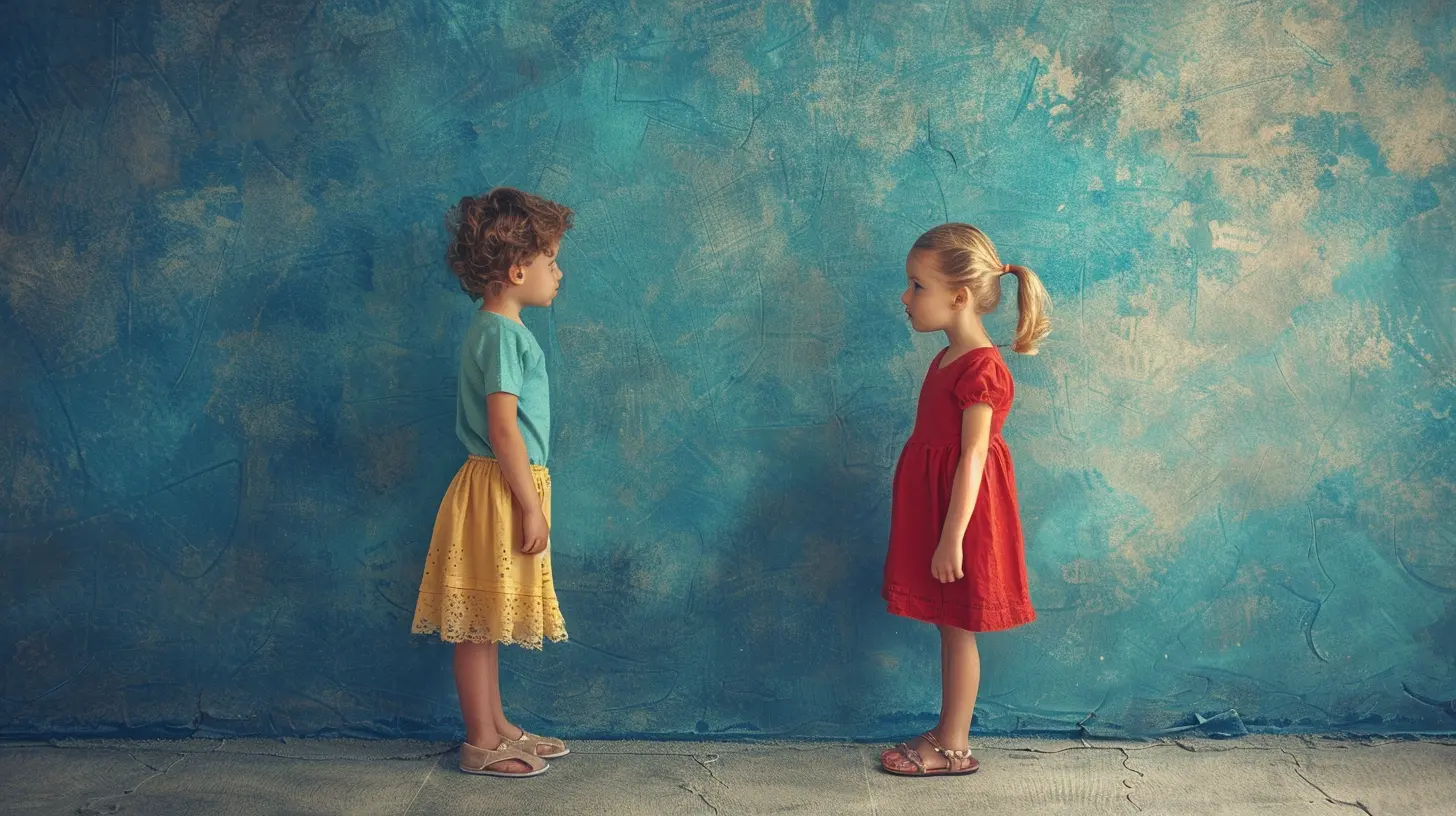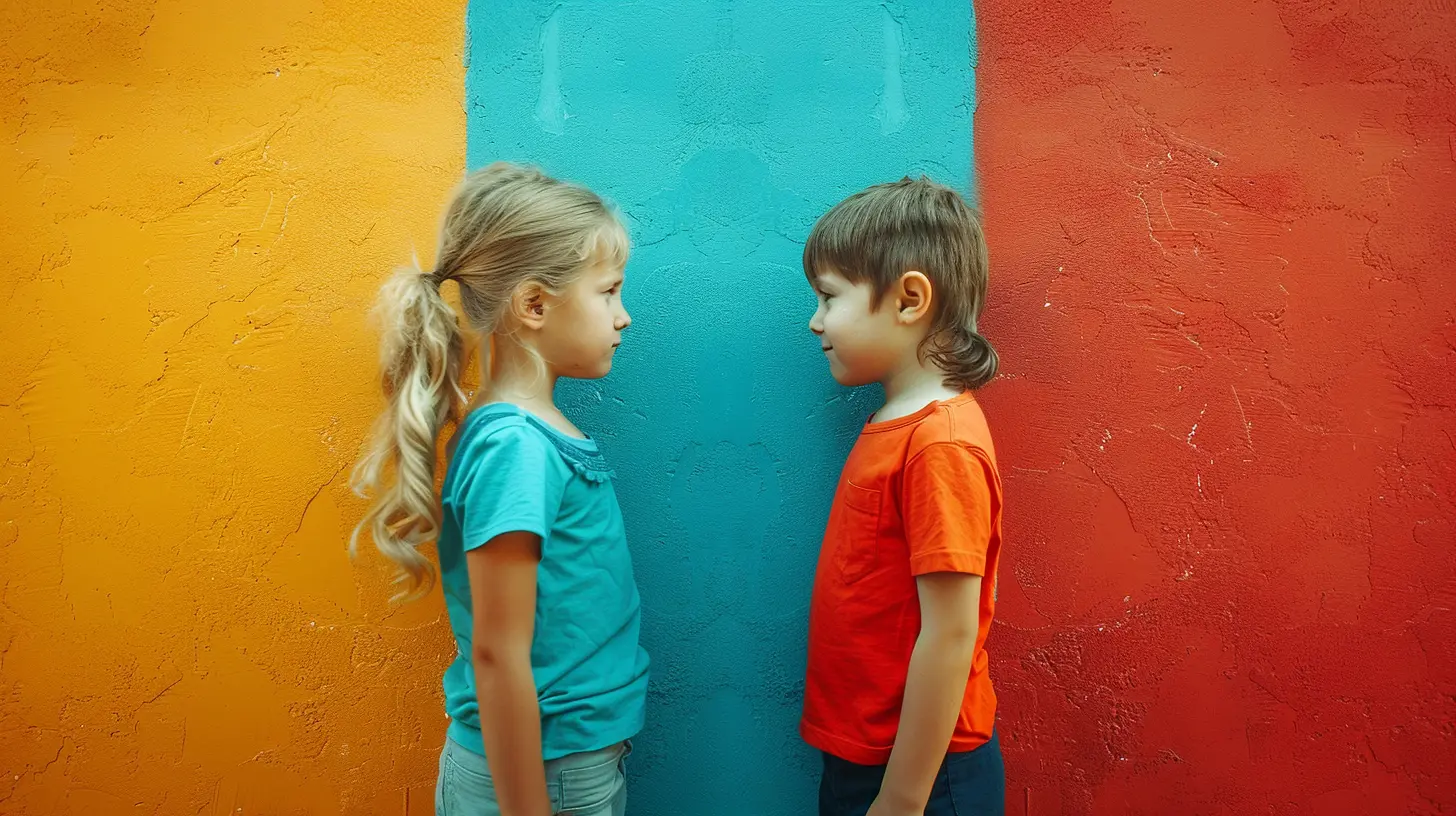The Importance of Teaching Kids About Personal Boundaries
25 November 2025
Parenting is a beautiful yet challenging journey. One of the most important lessons we can teach our children is the concept of personal boundaries. Just like we teach them to say "please" and "thank you," helping them understand boundaries is crucial for their personal growth, safety, and emotional well-being.
In today’s world, kids are exposed to so many social situations—at home, school, playgrounds, and online. Without a clear understanding of boundaries, they may struggle to communicate their needs, recognize when someone is crossing their limits, or respect the boundaries of others.
So, why exactly is teaching kids about personal boundaries so important? Let’s dive into it! 
What Are Personal Boundaries?
Personal boundaries are the invisible lines that define a person’s comfort zone—physically, emotionally, and socially. They help individuals determine how they want to be treated by others and how they should treat others in return.For kids, boundaries can range from simple things like not wanting to be hugged by a stranger to more complex situations like saying "no" to peer pressure. Teaching personal boundaries at an early age helps establish a strong sense of self-respect and confidence. 
Why Teaching Personal Boundaries is Crucial
1. Builds Self-Respect and Confidence
Teaching kids about boundaries helps them understand that their feelings and comfort matter. When they learn to stand up for themselves and express their needs, they develop confidence in their own decisions.Imagine a child who isn’t comfortable with a relative pinching their cheek. If they’ve been taught that setting boundaries is okay, they can confidently express their discomfort instead of simply enduring it. This builds self-worth and empowerment.
2. Helps Them Recognize and Respond to Unsafe Situations
One of the biggest reasons to teach kids about personal boundaries is for their safety. When children know that they have the right to say “no” when something makes them uncomfortable, they become better at identifying potentially harmful situations.For example, if a child understands that their body is their own and that no one should touch them inappropriately, they are more likely to speak up if something doesn’t feel right. This knowledge acts as a powerful shield against abuse, bullying, and manipulation.
3. Encourages Respect for Others
Boundaries work both ways—just as children need to establish their own, they also need to learn to respect the boundaries of others.By understanding that everyone has different comfort levels, kids become more empathetic and considerate. Whether it’s recognizing that a friend doesn’t like sharing their toys or understanding that some people need personal space, respecting boundaries fosters healthy relationships.
4. Prevents Future Relationship Issues
Setting personal boundaries during childhood lays the foundation for healthy relationships later in life. Kids who grow up understanding boundaries are less likely to tolerate toxic behaviors in friendships, romantic relationships, or professional environments.For instance, a teenager who has learned to communicate their limits will have a stronger ability to navigate peer pressure and avoid unhealthy relationships. 
How to Teach Kids About Personal Boundaries
1. Start Early
The earlier kids learn about personal boundaries, the better. Even toddlers can begin learning basic concepts like consent and bodily autonomy.For example, instead of forcing a child to hug a relative, ask them, “Would you like to give Uncle John a hug, or would you rather wave?” This simple choice teaches them that they have control over their own body.
2. Use Simple and Clear Language
Kids need straightforward explanations to understand boundaries. Instead of using complex terms, break it down into simple ideas:- "Your body belongs to you."
- "It's okay to say 'no' if you feel uncomfortable."
- "If something doesn't feel right, tell a trusted adult immediately."
Making these statements part of everyday conversations ensures that kids absorb them naturally.
3. Lead by Example
Children learn best by watching you. If they see you setting and respecting boundaries in your own life, they will mirror that behavior.For example, if you say, "I don’t feel like hugging today, but I’ll give you a high-five!", you demonstrate that personal boundaries are both normal and respected.
Also, respecting their boundaries is equally important. If your child doesn’t want to be tickled, stop when they say “no.” This teaches them that their words hold power.
4. Teach About Different Types of Boundaries
Boundaries aren’t just about physical space; they also involve emotions, privacy, and social interactions. Teaching kids about different types of boundaries helps them navigate the world more confidently.Physical Boundaries
- Personal space (e.g., "It’s okay if you don’t want to be hugged.")- Understanding safe and unsafe touch
- The importance of consent
Emotional Boundaries
- Expressing feelings without fear- Learning that it's okay to say "no" to things that make them uncomfortable
- Understanding that they don’t have to please everyone
Social Boundaries
- Recognizing when someone is being too pushy- Respecting other people’s choices (e.g., “If your friend doesn’t want to play, don’t force them.”)
- Understanding online boundaries (e.g., not sharing personal information with strangers)
5. Role-Playing Scenarios
Practicing real-life scenarios can help kids feel more confident in setting boundaries.Try role-playing situations like:
- A friend taking their toy without asking
- Someone standing too close and making them uncomfortable
- A peer pressuring them to do something they don’t want to do
Ask, “What would you say in this situation?” and guide them on assertive yet respectful responses.
6. Encourage Open Communication
Let your child know that they can always come to you if something makes them uncomfortable. Create a safe space where they feel heard and validated.Instead of reacting harshly or brushing off their concerns, acknowledge their feelings with statements like:
- "I hear you. That didn’t feel good, did it?"
- "You did the right thing by telling me."
- "Next time, you can say this…."
When kids feel safe talking to you, they’re more likely to speak up when needed. 
Overcoming Challenges in Teaching Boundaries
What If My Child Feels Guilty Saying No?
Many kids feel pressure to be polite, even when they’re uncomfortable. Reassure them: “Being kind doesn’t mean you have to say yes to everything.” Teach them polite yet firm ways to set boundaries, like:- "No, thank you."
- "I’m not comfortable with that."
- "Please stop, I don’t like that."
What If Someone Ignores Their Boundaries?
Unfortunately, not everyone listens to boundaries. Teach kids that if someone disregards their limits, they should remove themselves from the situation and seek help.Let them know: "If someone doesn’t respect your ‘no,’ that’s their problem, not yours."
What If Other Adults Disapprove?
Some relatives or teachers may see boundary-setting as "disrespectful." Stand firm in your parenting choices and remind others that your child’s comfort and safety come first.Final Thoughts
Teaching kids about personal boundaries is one of the most valuable gifts we can give them. It empowers them to stand up for themselves, respect others, and build healthier relationships throughout life.By starting early, having open conversations, and modeling respectful behavior, we can raise children who are confident, self-aware, and prepared to navigate the world with strength and self-respect.
So, next time your child says, “I don’t want to hug right now,” celebrate that moment—it means they’re learning the power of their own voice!
all images in this post were generated using AI tools
Category:
Parenting TipsAuthor:

Tara Henson

